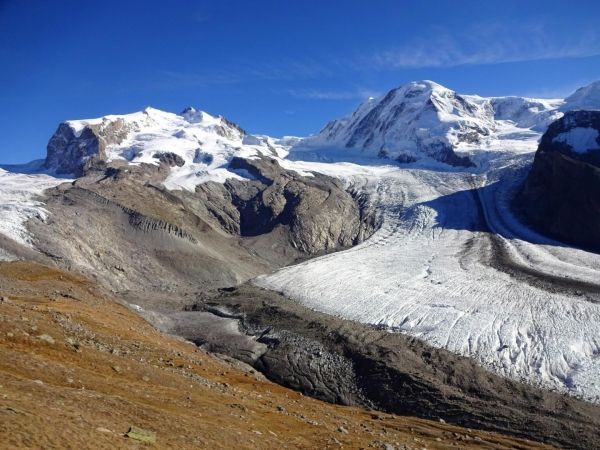New research on how glaciers in the European Alps will fare under a warming climate has come up with concerning results. Under a limited warming scenario, glaciers would lose about two-thirds of their present-day ice volume, while under strong warming, the Alps would be mostly ice free by 2100. The results, now published in the European Geosciences Union (EGU) journal The Cryosphere, are presented today (9 April) at the EGU General Assembly 2019 in Vienna, Austria.
The study, by a team of researchers in Switzerland, provides the most up-to-date and detailed estimates of the future of all glaciers in the Alps, around 4000. It projects large changes to occur in the coming decades: from 2017 to 2050, about 50% of glacier volume will disappear, largely independently of how much we cut our greenhouse gas emissions.
After 2050, “the future evolution of glaciers will strongly depend on how the climate will evolve,” says study-leader Harry Zekollari, a researcher at ETH Zurich and the Swiss Federal Institute for Forest, Snow and Landscape Research, now at Delft University of Technology in the Netherlands. “In case of a more limited warming, a far more substantial part of the glaciers could be saved,” he says.
Glacier retreat would have a large impact on the Alps since glaciers are an important part of the region’s ecosystem, landscape and economy. They attract tourists to the mountain ranges and act as natural fresh water reservoirs. Glaciers provide a source of water for fauna and flora, as well as for agriculture and hydroelectricity, which is especially important in warm and dry periods.
Read more at European Geosciences Union
Image: Gorner glacier at the end of the summer of 2017. The glacier is located in the Monte Rosa massif and is the second largest glacier of the European Alps. (Credit: M. Huss)


